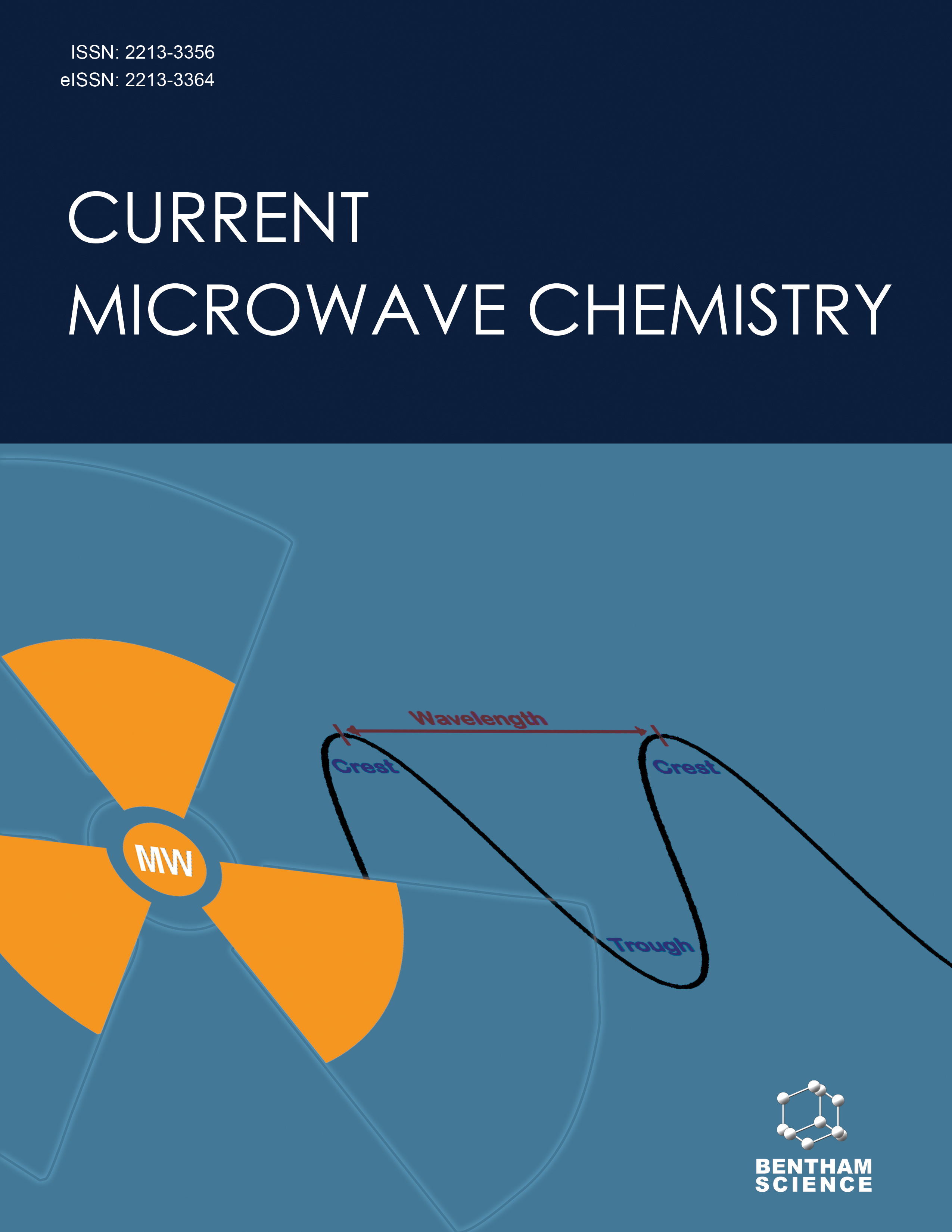- Home
- A-Z Publications
- Current Microwave Chemistry
- Previous Issues
- Volume 9, Issue 1, 2022
Current Microwave Chemistry - Volume 9, Issue 1, 2022
Volume 9, Issue 1, 2022
-
-
Microwave-assisted Synthetic Scheme of Novel Schiff Base Congeners of Pyrimidine Nuclei by Using Water as Solvent: A Green Approach to Synthesis
More LessAuthors: Dipanjan Karati, Kakasaheb R. Mahadik and Dileep KumarAim: The research work aims to develop a sustainable microwave-assisted scheme for the synthesis of 4-(benzylidene amino)-6-phenylpyrimidine-5-carbonitrile congeners. Background: 4-(benzylidene amino)-6-phenylpyrimidine-5-carbonitrile scaffolds are novel molecules having various pharmacological activities, such as neurodegenerative, antimicrobial, and anticancer. Schiff base congeners are considered efficient ph Read More
-
-
-
Surface Modification of Polybenzimidazole (PBI) with Microwave Generated Vacuum Ultraviolet (VUV) Photo-oxidation
More LessBackground: Polybenzimidazole (PBI) is used in high temperature proton exchange membrane fuel cells (HT-PEMFCs) and redox flow batteries, where proton transfer occurs with the nitrogen-containing groups in PBI, and in aerospace applications exposed to oxygen and radiation. Objective: The objective is to investigate VUV photo-oxidation of PBI for the first time in order to incorporate polar functional groups on the surface Read More
-
-
-
A Novel Powerful Choline Chloride - Thiourea/Sulfuric Acid: An Efficient and Recyclable Catalyst Used for the Microwave-assisted Synthesis of Quinazolin- 4(3H)-one Derivatives Used as Antibacterial Agents in Green Media
More LessAuthors: Fateme H. Norouzi, Naser Foroughifar, Alireza Khajeh-Amiri and Hoda PasdarBackground: Choline chloride-thiourea/sulfuric acid is a powerful and efficient green catalyst used for one-pot synthesis of quinazoline-4 (3H)-one derivatives via a reaction between various amines, acetic anhydride, and anthranilic acid under microwave irradiation and solventfree conditions (4a-q). Microwave irradiation, which is a faster, more cost-effective, less energyintensive, and more efficient method than conventional Read More
-
-
-
Analysis of Aqueous Dextran: An Ultrasonic Study
More LessBackground: Ultrasonic research can be used to recognise molecular connections and the structural behaviour of molecules. The combination of ultrasonic velocity, density, and viscosity data provides a plethora of information regarding ion interactions, dipoles, hydrogen bonding, multi-polar, and dispersive forces. Objective: This study aimed to determine the molecular interaction between solute dextran of different concentra Read More
-
-
-
Microwave Sol-gel Synthesis of Co, Ni, Cu, Mn Ferrites and the Investigation of Their Activity in the Oxidation Reaction of Carbon Monoxide
More LessBackground: The study effect of microwave radiation on the catalytic properties of transition metal ferrites synthesized by ceramic and sol-gel methods in the oxidation reaction of carbon monoxide into dioxide. Objective: This work aims to study the effect of microwave radiation on the production of cobalt, copper, nickel, and manganese ferrites by sol-gel combustion technology using various organic reagents and to stu Read More
-
-
-
Microwave-assisted Synthesis of Novel Triazolyl Pyrazolyl Pyrazoline Substituted Coumarins and Their Antimicrobial Activity
More LessAuthors: Kaushik N. Kundaliya, Niraj H. Patel and Dinker I. BrahmbhattBackground: The 1,2,3-triazole, pyrazole, and coumarin-based derivatives have received much attention due to their wide coverage of biological properties. The present work describes the microwave synthesis of novel triazolyl pyrazolyl pyrazoline substituted coumarins. The structures of all the newly synthesized compounds are characterized by spectral analysis and screened for their in vitro antimicrobial activity by the Brot Read More
-
Most Read This Month
Article
content/journals/cmic
Journal
10
5
false
en


